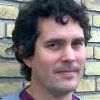|
|
|
|
|
|
|
|
| |
  
Rune Lyngsø,
Yun S. Song and
Jotun Hein. Accurate Computation of Likelihoods in the Coalescent with Recombination via Parsimony. In RECOMB08, Vol. 4955:463-477 of LNCS, springer, 2008.
Keywords: coalescent, likelihood, phylogenetic network, phylogeny, recombination, statistical model.
Note: http://dx.doi.org/10.1007/978-3-540-78839-3_41.
Toggle abstract
"Understanding the variation of recombination rates across a given genome is crucial for disease gene mapping and for detecting signatures of selection, to name just a couple of applications. A widely-used method of estimating recombination rates is the maximum likelihood approach, and the problem of accurately computing likelihoods in the coalescent with recombination has received much attention in the past. A variety of sampling and approximation methods have been proposed, but no single method seems to perform consistently better than the rest, and there still is great value in developing better statistical methods for accurately computing likelihoods. So far, with the exception of some two-locus models, it has remained unknown how the true likelihood exactly behaves as a function of model parameters, or how close estimated likelihoods are to the true likelihood. In this paper, we develop a deterministic, parsimony-based method of accurately computing the likelihood for multi-locus input data of moderate size. We first find the set of all ancestral configurations (ACs) that occur in evolutionary histories with at most k crossover recombinations. Then, we compute the likelihood by summing over all evolutionary histories that can be constructed only using the ACs in that set. We allow for an arbitrary number of crossing over, coalescent and mutation events in a history, as long as the transitions stay within that restricted set of ACs. For given parameter values, by gradually increasing the bound k until the likelihood stabilizes, we can obtain an accurate estimate of the likelihood. At least for moderate crossover rates, the algorithm-based method described here opens up a new window of opportunities for testing and fine-tuning statistical methods for computing likelihoods. © 2008 Springer-Verlag Berlin Heidelberg."
|
|
|
|
|
|
| |
    
Joanna L. Davies,
Frantisek Simancík,
Rune Lyngsø,
Thomas Mailund and
Jotun Hein. On Recombination-Induced Multiple and Simultaneous Coalescent Events. In GEN, Vol. 177:2151-2160, 2007.
Keywords: coalescent, phylogenetic network, phylogeny, recombination, statistical model.
Note: http://dx.doi.org/10.1534/genetics.107.071126.
Toggle abstract
"Coalescent theory deals with the dynamics of how sampled genetic material has spread through a population from a single ancestor over many generations and is ubiquitous in contemporary molecular population genetics. Inherent in most applications is a continuous-time approximation that is derived under the assumption that sample size is small relative to the actual population size. In effect, this precludes multiple and simultaneous coalescent events that take place in the history of large samples. If sequences do not recombine, the number of sequences ancestral to a large sample is reduced sufficiently after relatively few generations such that use of the continuous-time approximation is justified. However, in tracing the history of large chromosomal segments, a large recombination rate per generation will consistently maintain a large number of ancestors. This can create a major disparity between discrete-time and continuous-time models and we analyze its importance, illustrated with model parameters typical of the human genome. The presence of gene conversion exacerbates the disparity and could seriously undermine applications of coalescent theory to complete genomes. However, we show that multiple and simultaneous coalescent events influence global quantities, such as total number of ancestors, but have negligible effect on local quantities, such as linkage disequilibrium. Reassuringly, most applications of the coalescent model with recombination (including association mapping) focus on local quantities. Copyright © 2007 by the Genetics Society of America."
|
|
|
|
|
|
| |
  
Rune Lyngsø,
Yun S. Song and
Jotun Hein. Minimum Recombination Histories by Branch and Bound. In WABI05, Vol. 3692:239-250 of LNCS, springer, 2005.
Keywords: ARG, branch and bound, from sequences, minimum number, Program Beagle, recombination, reconstruction, software.
Note: http://www.cs.ucdavis.edu/~yssong/Pub/WABI05-239.pdf.
|
|
|
|
 - forked on GitHub.
- forked on GitHub.




